|
Score: 93/100 (9.3 out of 10)
“Cockatoos in the Mangroves” is a demonstration of poetry as art! Dr. Vanessa S. Lee AhMat is a PhD, poet, and activist on behalf of the Aboriginal people, the indigenous people of Australia. She has been recognized by the Australian Parliament for her work, and her work, including "Cockatoos in the Mangroves" has also been featured in live on-stage performances. In other words, she is an incredible human being on a mission, and that definitely comes across in this poetry book! Dr. AhMat's biggest goals appear to be to raise awareness and advocate for the Aboriginal people of Australia who are historically marginalized after being displaced and nearly bred out of existence during the founding of Australia. Now, we usually take the phrase “raising awareness” for granted, and it's an idea that just gets thrown around casually by every advocacy group under the sun. People are constantly raising awareness of things from cancer to domestic abuse to gun-control, and one poem in this titled “Coloured Ribbons” actually points that out. What difference does it make if it doesn't lead to action? Action and driving positive change are ultimately the goal of raising awareness, let's not forget that. They put the “act” in activism. The author won't let us forget that. And back to the point: this book is a tremendous reminder of the power of activism and raising awareness—it actually prompted us to be interested enough in the subject matter to do research. It made us really truly care about the plight of the Aboriginal people, something that we're sure the majority of the world aren't knowledgeable of, much less sympathetic to. One of us is from Hawaii, and the plight of the Aboriginals looks and feels a lot like what the Native Hawaiians suffered—marginalized, displaced, their lands taken over, their language and culture dying. Every year, Hawaiian sovereignty groups mourn the loss of the their kingdom and call out for restitution, but to no avail. It almost always falls on deaf ears. We can't help but feel a similar sentiment from Dr. AhMat's poems. These poems are fierce yet beautiful. They are truly POWERFUL. Without even seeing or hearing these recited on stage, we already know that they are delivered with directness and strength. Many of these are beat poems. The lines are short and cutting. The words are pounding. There is one poem in here titled “Rope” that constantly repeats the phrase “to the left of the bucket / near the tap is the rope” which in turn creates a sort of rhythmic chorus for the poem. There are three poems in here (the “Girl” trio) that were inspired by an old church being reclaimed by nature. Now, here's the thing: you may be wondering how is that any different from the works of Elizabeth Reinarch constantly and relentlessly slamming on religion like a broken record three out of four books? First of all, it feels earned. According to Dr. AhMat and our research, many Aboriginals strongly feel (with evidence) that the white settlers weaponized their religion to weed out Aboriginal culture and subjugate the Aboriginal people. This was done, as stated in several poems, to seize land and natural resources, namely coal. In the poem titled “Eviction” the author states that “coal was chosen over life.” There are actually multiple layers to that statement. First, coal was chosen over the lives of Aboriginals, and secondly coal was chosen over the preservation of the earth. The author's second big argument is against pollution, the abuse of the earth's resources, and human beings driving climate change. That's a lot to unpack, but the point remains: Dr. AhMat's statements are not a blind, out of control rage session at Christianity or any other religion, it's a call to look at the facts and the evidence: the white settlers with their religion all but erased the Aboriginal culture and the Aboriginal people like they did in other parts of the world—Hawaii and Mesoamerica come to mind. We learn from poems like “As Black Women Do” that there was an attempt to commit ethnic genocide against the Aboriginals by breeding them out of existence and that Aboriginal women had been the targets and victims of rape and abuse. In “Called to Order” the poet talks about the “ghost of spiritual oppression” that includes the “rape, murder and oppression” of Aboriginals (especially Aboriginal women) that goes unpunished and even unacknowledged to this day. What's amazing is that Dr. AhMat does things that, under other circumstances and in less competent hands, would come across as annoying such as going after religion, going after capitalism, going after the patriarchy, and going after the west. These are things that just seem fashionable in today's society. It just seems like every college student these days needs to complain about one or all of these things. It just seems like every college student these days is taught to hate or at least be skeptical of religion, capitalism, the patriarchy, and the west because, well, that's the cool and hip thing to do now. They then overcompensate and start advocating for the extreme opposite, perhaps not realizing that the extreme opposite can be just as bad. It's just as bad to hate white people as it is to hate black people. In 50 years, we might be protesting secularism, socialism, the matriarchy, and the east. Can we just not hate any one group of people? To quote Rodney King, “Can we all just get along?” But we digress, it's actually a delight to listen to her vent her frustrations on these things, and they are certainly not unwarranted. Yes, history speaks for itself, but someone needs to share that history. That's why books like this are so important and invaluable. Check it out on Amazon!
0 Comments
Score: 75/100 (7.5 out of 10)
You know what? Fine. This is fine. This book actually has a few amusing and humorous moments as it pokes fun at different points in history. The first story pokes fun at the circumstances leading up to the all-important Battle of Hastings in 1066 AD as Edward the Confessor dies childless and without naming a clear successor. This led to the conflict between two men with equal claims to the throne: William the Conqueror of Normandy and Anglo-Saxon Harold Godwinson. English broadcaster Jeremy Kyle, the protagonist of this first set of stories, gets to interview each of these major players, pointing out their absurdities and ridiculousness. Later in this set of stories, Jeremy Kyle also visits Henry the VIII and his daughters, Elizabeth and Mary. The author finally answered our question as to whether or not she can go 10 pages without a character using a racially insensitive term, attacking religion, or whipping out their phallus in public. But barely—by the smallest of margins. We still have a pretty grotesque moment in a story in the book—don't read the rest of this paragraph if you're eating or prone to vomiting. This author just can't help herself. She just can't resist. We have to have a whole story in this book about a man's flaccid penis and his wife's smelly vagina. We're not even kidding, that's the focus of the story. It's disgusting. Absolutely disgusting. Is it as disgusting as throwing around the “N” word for chuckles or talking about pedophilia or incest between a grandma and grandson as in the author's other books? No. But it's disgusting none the less. The book could've scored even higher if, once again, the author could just get out of her own way. Get rid of nonsense like that, it's unnecessary and it's hurting her ability to tell good stories. If it wasn't for nonsense like that, “Heirs of Deceits” could've been a great story. The art continues to be cute and humorous, and this book has some of the best in this author's books, likely due to the opportunity to portray period outfits in a cartoonish way. Also, the author's intellect and knowledge of history are well on display here. Oh, before we forget, one of the other problems with these books is how the author just refuses to indent. She won't indent new paragraphs or dialogue. It's slightly bothersome. Yes, you could argue that it's because these stories were intended to be stage plays or that it's a stylistic choice, but combined with the other problems in the author's writing, it's the straw that broke the camel's back. Well, we've done it. We've finally, mercifully gotten through these four books. We're just shell-shocked. These four books—Lizzies Frizzies, Lizzies Scaries, Lizzies Histories, and Heirs of Deceits—make up about 700 pages of traumatizing content. To be fair, each of these has at least some redeeming qualities. The art is always cute and humorous. Many of the characters in Heirs of Deceits were at least interesting. So, the author has the tools and the talent, she just needs to apply them effectively and without making her audience rage quit. Learn about this book here. Score: N/A
Do you remember when the Atlanta Falcons reached the Super Bowl and had a 25-point lead on the Patriots? It would've been the franchise's first-ever Super Bowl win. All they had to do was not do anything stupid and manage the game. Then, the Falcons became really complacent, started making really obvious oversights, blew coverages, missed blocks, and all of a sudden the game was tied. All they had to do was score again or run out the clock, and yet they couldn't do either. So what happened? They blew that 25-point lead and lost in overtime. Their hopes and dreams shattered. Atlanta had blown opportunity after opportunity to put the game away. They just couldn't help themselves. They self-destructed. They imploded. This book just self-destructed for no good reason whatsoever. This book left us wondering: HOW? How could the author drop the ball on such a great story and characters like this? How? It just blows our minds. Everything was there. All the pieces were in place. The characters were interesting. The plot was going somewhere. We cared about what was happening and whether or not the characters were going to be ok, and then the author just couldn't help herself. There just needed to be pedophilia talk. There just needed to be heavy-handed social commentary on religion, socialism, and capitalism. There just needed to be the “N” word thrown around, and it just needed to be thrown around by one of our favorite characters up to that point. We're just opening our hands with our jaws wide open asking: HOW? How do you shatter a freaking diamond? How did this even get past all of the creative writer groups/circles the author keeps saying proofread this? Again, it seems like they skimmed the book and then realized their evening yoga class was coming up, so they said, “It looks good to me!” Pat on the back. Pat on the back. Pat on the back. That's how these writing circles seem to go. Well, in this case, maybe the writer needed a figurative kick in the behind. We've already had a story from this author about incest between a grandmother and grandson. We've already had a story from this author (probably two or three at this point) ripping on religion. We've already had a story from this author in which a cat is sexually objectified, figurative or not. We've already had a story from this author with the “N” word thrown around for chuckles. We've had at least two stories from this author of men whipping out their genitalia and waving them in public. When is it enough already? Someone—a really good beta reader, not an #$@ kisser who blows smoke—needs to sit down with this writer and keep them in check, because if literally anyone had called out this author and told them “This is NOT OK” this book might actually be GREAT. You have the Jane Austen archetype (even named Jane) with a potential learning disability. You have the oppressive boarding school. You have a really compelling romance. You have tension from all sides—the LGBTQ love-triangle tension, the interracial tension, the class struggle. You even have a compelling murder mystery! It's so tragic that all of that gets muddled by the author's inability to just get out of her own head and into the characters' heads. This is comparable to Onision with better grammar. Who is Onision? Oh, he's this author who is also this influencer who REALLY HATES the following things in this order: God, religion, and his father. How do we know this? Because the villains in almost every single one of his poorly-written stories are either God, religious people, or father figures. And he rants about it constantly. And he won't shut up about it to save himself. It sounds a lot like this book. But hey, at least it has better grammar, right? Look, the use of the “N” word in this book is not as bad as its usage in Lizzies Frizzies. For one, the character who says it also suffers the consequence of ceasing to be alive by the end of this. The problem is that he was built up as one of the best characters in the book before that point. And it's not made any better by how the targeted Black character, Moses, is characterized. We can hardly remember anything about his personality except what the white folks say about him—that he's like a savage, un-Christian, and a voodoo practitioner. But he's a good guy, right? Whatever that means. He might as well be a cardboard cutout with a shirt that says, "Token Black Character, Nice Guy, They Are Wrong About Me." That's how bad it is. At least we're not being prompted to hate him, but that's the least we should expect. Look, we're not kidding when we say that this could've been great. The couple in this was on the way to being a top five couple in this contest. They had mutual attraction and some chemistry. There was childlike wonder in the infatuation they held. Then, you know what? The author happened to them. They may be blood relatives. Not just cousins, no. Take your guess as to how closely related these two are cause we're pretty done talking and thinking about it. And what's more is so much of this takes place when the characters are like 9-14, and they're described with a pretty disgusting amount of sexual detail for characters this age including full nudity, skirt raising, excretions, and menstrual blood—you name it. Gosh, it's just unbelievable. It just seems like every character wants to rape another character. Every adult seems like a molestation waiting to happen. Georgina is constantly leering at and undressing Anne with her eyes even though they're not together. It's unbelievable what this story tries to get away with. And Henry! Henry just gets ruined in every way, shape, and form you can ruin a character. How do you ruin Henry?! How do you turn him into an abusive, misogynistic racist after the way you introduced him as Jane and Lady Anne's saving grace?! The one good person in their life who they could look to as their beacon of light and hope. You crushed it. How?! How do you mess up something that good that badly? This author has a great grasp of the English language. You already know we aren't full of crap, so when we say that, we mean it. She also has a really cool, sexy author name that would probably sell copies. She is capable of creating likable characters and building real tension. She just needs to stop putting a stick in the spoke of her own tire. The book is on Amazon HERE. Score: N/A
This book is... a thing that happened. Remember when we reviewed “Wakan Tanka” by Dr. John Bennett and said “WOW?” Well, we read this book and said, “WHY?!” Oh, my gosh, why? Why would you write about THAT? Of all things. There are probably as many things to write about as there are stars in the visible universe, and of all the things the author could've written about, they chose to write about incest?! And not just incest but incest between a grandmother and her grandson?! WHY?! What grandkid is like, “Am I about to be seduced by an eighty-year old woman?” (ACTUAL QUOTE). Should we... call someone? Is Chris Hansen available? Maybe John Walsh? What the hell? And speaking of hell, there is yet another story about deciding whether or not someone is in hell. What is with the author's fixation with this trope? Did some Catholic nun or Shaolin monk powerbomb them through three flaming tables with barbed wire and thumbtacks whenever they misbehaved as a child? If so, please do tell the authorities because we as decent human beings don't want them near another child again! Please know that most religious people don't wanna slice foreheads open with pizza cutters and break LED light tubes over their backs. Most religious people are... people. The author is critical of religion. We got it the first time we read it in Lizzies Frizzies. We get it. Fine, we'll play. Religious people can be jerks and hypocrites or even homicidal maniacs as much as the rest of human kind. But what sane, decent human being in 2022 is sitting around the house thinking, “She/he must be in hell.” No Christian, Jew, Muslim, Hindu, or Buddhist that we know of is sitting in their home on a daily basis with a Book of Life or Book of the Dead saying, “This person needs to go to hell, I need to make sure of it.” Scratch that, there are people who do that. They're called cultists, terrorists, and extremists. The majority of religious people are not wishing death and damnation on their fellow human beings, in fact the opposite is true. You can say it's satire. You can say it's supposed to be an exaggeration, but it's a misrepresentation of most modern religious people, the same people who run orphanages and charities around the globe and try to teach things like love and compassion. And the bashing just never ends, it continues into “Heirs of Deceit” by the same author. We'll more than likely see it in “Three Dimensions: Lizzies Mysteries.” Another thing that rears its ugly head again is race. Once again, if you're not going to handle the topic with care and respect, then don't handle it at all. Don't even touch it with a ten-foot pole. It's so brief, but there is an incredibly cringe-worthy quote describing girls who are unattractive yet put in a role usually intended for attractive people. It reads “A lot of them didn't look like model-girl types; they were small, fat, mousy. Later on she brought mainly black girls.” Look, let's give the author the benefit of the doubt and assume they meant to separate the adjectives with negative connotations (small, fat, mousy) from the state of being black, but the fact remains it reads terribly. The implication many readers will make from this is almost unspeakable. What group of creative writers looked at this and thought it was ok? Did they just skim it, see that the comic sans font was glamorous AF, and decided they wanted to get home to their Dr. Pepper and personal pan pizzas instead of dirtying the pages with red marks? Who looks at a quote like that or about incest between a grandparent and a grandchild, then says, “OK!” Several times we have to read about the “two black girls” or the “two black orphans” who dress and act exactly alike and have no other distinguishing characteristics other than 1. being orphans, 2. being girls, and 3. being black. You think that's bad? Wait 'til we get to Moses in “Heirs of Deceit” who is repeatedly, relentlessly called the “N” word and is stereotyped as some kinda heathen voodoo practitioner. There is a story in here called “Oedipus in Furs” that actually has a decent premise—allowing the two fathers of psychoanalysis/analytical psychology, Sigmund Freud and Carl Gustav Jung, to have an existential moment in a cat cafe. During this, an especially attractive waitress catches their eyes and the two psychoanalysts use feline metaphors to describe the way she looks and moves. That sounds like it could be great, right? Like, it could almost be poetic. And it is, kinda. After all, these psychoanalysts proposed that human beings have animalistic instinctive drives. The problem is that the author just can't help herself, she needs to make these descriptions so creepy that they verge on implying bestiality. That's right, we're talking about the concept of an animal being objectified sexually. No, you didn't misread that. The cat in this story is an allegory for what is “sexy.” The author also can't help herself because, like in her last book, a character is obligated to whip out their phallus and wave it around in public for no real reason other than the author wanted them to do it or thought it'd be funny. It's not funny at all. And for a book called “Lizzies Scaries” it's not scary at all. Why? Just... why? P.S. the art is cool. Score: 96/100 (9.6 out of 10)
This book made us all collectively go “WOW!” Wow, wow, wow. What more do we have to say but wow? This book by the brilliant Dr. John Bennett is a great collection of educational, historical detail and philosophical discussions regarding humanity, the evolution of our species in relation to the changing Earth, and humanity's search for higher meaning. Wow. Well, that's a lot to unpack! You can just tell that Dr. Bennett did his research. You can also tell the passion he put into this. You can tell the rounds of edits and revisions he put this through. We read this over the course of about a week, and it seemed like every day we had something interesting to say or discuss about it. For example, we were like, “Did you know that meteorite in Mexico that killed the dinosaurs created a tsunami that was 100 meters high?!” or “Did you know that some of the hominids may have interbred or that some of them like the Neanderthals lived around the same time as Homo Sapiens?” And, of course, we had to have a 30 minute conversation about how cool chimpanzees are, how close they are to us genetically, and how cute and fluffy they are. This book takes you from the beginning—to scientific Adam—to see the kind of world he must've lived in and the challenges he must've faced. It shows you how humans and human-like creatures may have evolved, adapting to changes such as the climate, predators, and food availability. We go through multiple epochs or critical periods in Earth's history, each one with its own interesting stories to tell. What's very apparent is that despite all we know, there are even more things we don't know and have to make educated-guesses about because evidence is sparse or non-existent. We have to assume a lot about what certain tools were used for because, obviously we weren't there to see it. There are so many interesting things to explore in this book! There are the fossil remains of hominids. There are their tools. There are their footprints and cave drawings. And speaking of caves, you even get to uncover some of the secrets of the caves near Gibraltar. There are even sections on the development of hominids and civilizations in East and South Asia, Mesopotamia, Africa, and more that are just a joy to read. They're fascinating! Something that's also interesting about this book is that despite all the scientific knowledge the author has, they're not dismissive of the topic of peoples' belief systems. In fact, a lot of this book speculates about how or why these belief systems came to be across the globe. For example, the author wonders if ritual burials or funerals may have indicated a growing concept of an afterlife. The author's stated goal is to seek a way to harmonize these beliefs with what can be scientifically proven. It's actually very fascinating. So is this pseudo-science? Actually, no. Almost every statement is backed up with at least some reputable source and/or evidence. Almost everything is questioned, and we're invited to question everything. That's science. True science leaves no stone unturned and no hypothesis unconsidered. At the same time, true science makes as few assumptions as possible, and Dr. Bennett seems to accomplish this balance between what we can safely speculate and what we know for sure. So, congratulations to Dr. Bennett on his impressive book on the history of the human species! You've joined a very exclusive list of 9.6-rated books! Check it out on Amazon! Score: 87/100 (8.7 out of 10)
This is a delightful little read with some beautiful and impressive art. The stylistic choices are also a treat for the eyes in this case. Let's just get this out of the way: for practical applications (as a self-help book), this really doesn't do much other than remind and inspire. Inspiration is valuable, yes, but what exactly the author wants the reader to do to help themselves is left a little vague. We gather that it can be summed up in the following: know that God has his angels looking over you, have faith, pray to God for guidance and protection, and trust God. Now, we know that's a lot, but it's also quite abstract. Prayer is actionable. It's something you can do. Concepts like faith and trust are abstract. That's not to say they aren't meaningful. In fact, these concepts have kept human beings alive through the darkest of times, whether just psychological, physiological, or straight-up supernatural. The author shares some interesting stories about the times that her faith and trust in God has saved her. Perhaps the story that stands out to us the most is the one in which a blizzard causes traffic to veer off of the road, presumably to a ditch, and the driver found that they were stuck in this death trap. All she could do was pray. And, with her special ability to see and hear angels, she saw them intervene to save her. That's right, the author has a gift. We're not going to be too hard on her because we get it. Let's just say that one of us had a gift at one time too. Many of us know of at least one person who had or claimed to have had a sixth sense. Well, this author was apparently one of them. From a young age, she could see things, presumably angels. She never learned how or why she had this gift, humorously proposing that her Dutch grandma must've prayed them over her a long time ago. Now, there are probably many rational and hypothetical explanations for having a sixth sense—psychological reasons like schizophrenia, electromagnetic fields, or just purely the human imagination. However, we like to consider the idea that magic (or the supernatural/paranormal) is just science we don't understand yet. Who's to say that there isn't some mirror dimension rubbing up against our universe whose inhabitants appear from time to time? Who's to say that there aren't other beings we conceive of as “spiritual” who are simply visible to some and not others? We don't want to jump on the author knowing what we know and just shout, “she's just crazy!” That would be unfair, but it would probably be the conclusion that many would come to. We tried to give her the benefit of the doubt. With that said, in analyzing her claims, many of her descriptions of these angels sound very familiar because these angels look and dress like they do in famous works of art. There are descriptions that sound a lot like works by Gustave Dore and Michelangelo. Many of the warrior angels dress like soldiers from ancient Greece. There's even the appearance of typical Cupid-like Cherubs you'll find depicted in a jewelry store. The singing angels wear white robes because of course they do. However, these descriptions are some of the most interesting things in this book. One of the most fascinating things the author describes is their faces, because she says they're hard to make out. One very important thing in this book is that even while talking about angels, the author is wise enough to remind her mostly-Christian audience that angels aren't to be worshiped or thought of over God and Jesus. She reminds the audience that Jesus is still what makes Christianity Christian and that the angels are merely Christ's servants. That's probably important to note. All in all, this can be an interesting book to some with a spiritual or religious inclination, or just those who are curious about these things. Check it out on Amazon! Score: N/A
We're sad to say but this is one of the few cases when we just collectively could not approve of a book. Thankfully, the author has several more entries and this will hopefully not become a pattern or a total loss, because it does seem like the author has a talent for writing. The problem with the stories in this book is that some of them come across as incredibly insensitive if not downright offensive. Now, look, we absolutely love the 1st amendment and want to see it preserved. You saying something shouldn't be the end of your life or your livelihood. We are not for canceling everyone who says something we don't like or agree with, nor do we condone throwing someone under the bus for something they said or did over ten years ago when times were different and they were younger/less wise. You have the right to say what you're going to say. The problem is that what you say does affect others, and they equally have the right to express their feelings about your words. The choice of language and the crudeness in this book is abysmal. We're not just talking about swearing or a few lewd jokes here or there, we're talking about the actual use of racially insensitive and offensive terms. We get that these stories were written at a different time, before Trayvon Martin, before Ferguson, before George Floyd. We also get that the author is in no way, shape, or form promoting violence or hate, however we can't ignore the hurt and the history behind these words simply because they're used in jest and intended to show the incompetence or ignorance of a character. The truth is, it was very unneeded and unnecessary. That kind of thing needs to be EARNED. If you want to write about a group of people being carted off on trains to concentration camps, your story and its characters better have earned it. If you want to use a racially insensitive term to put across that a character is ignorant or that a community is in turmoil, there better be some real coming-to-Jesus redemption moments or a comeuppance of some sort. You don't just point and laugh at it, then say, “So silly! Wasn't that so silly? He didn't know what that word meant. Haha!” The story in question is incredibly short and not given nearly enough time and room to breath. If you're going to confront the issue of racism, then do so, but treat the topic with the care and respect that it deserves. Another similar issue is how religion is treated with such disdain. There's a particularly offensive story (some kinda stage play that was actually performed apparently) in which the angels consider throwing the souls of the dead into a black hole because religion is meaningless, implying in this story that God stopped caring a long time ago and that Christ's sacrifice accomplished nothing. They even comment dismissively on Saddam Hussein's religion as if Saddam Hussein is somehow the best representative of all Muslims, then feel the need to comment on how George Bush and Tony Blair started the problems in the Middle East because why the heck not? Look, we get being funny by poking fun at the things people believe and at current events, but these jokes just come across as such a mean-spirited low blow. They are incredibly distasteful. The other stories in the book are also pretty unremarkable and forgettable. There's almost nothing really to grasp onto. There's no character so compelling that we actually care what happens to them. There's one story in which—for no reason other than the writer wanted it to happen—a character appears to brandish and fondle their genitalia while acting inappropriately in a pub to the cheering and jeering of those in attendance. There's so much emptiness: so much empty sexuality (with no payoff such as building character relationships), so much empty conflict and tension. So much emptiness. It's so difficult to recommend this book for anything other than its art (which is occasionally nice) and its inclusion of comic sans font, the greatest font ever made. Learn about it on Amazon Score: 90/100 (9.0 out of 10)
“The Other Side of Good” is a solid crime-thriller/drama with an intriguing premise, some memorable characters, and meaningful stakes! Two dynamically opposed characters team up to take on the most evil organization known to the multiverse: modeling agencies. The premise of this novel is actually extremely intriguing. Crime lord Theo Jackson and officer/detective Denton Jones, two former friends, are prompted by the mayor to touch bases en route to the building of a new youth center in their old neighborhood. Jackson has cleverly avoided arrest nearly his entire life, yet his reputation as the most powerful kingpin in Cincinnati precedes him. Jones has fought his whole life to be in the up and up—to be the best person and police officer he can be. No two people could be more different, yet the two are united in purpose when they discover that an underground human-trafficking ring is being run in their city by a powerful and feared Chinese syndicate known as the Santu. Like the Yakuza after the Tohoku earthquake and tsunami, or Al Capone during the Great Depression, Jackson and his gang are prompted to help their community. Doesn't that just sound great? Doesn't that just sound like a TV show in the making? It is, indeed, a good story, but could it have been a great story? It never really reaches its full potential. Not even close. And there are even times when the novel seems to self-sabotage. We'll get back to that later. We are suckers for good crime thrillers. Prison Break and Breaking Bad are among our favorite TV shows now, and The Dark Knight is definitely one of our favorite films. Something that all of these do well (and that this novel attempts) is showing how bad (or even very bad) people can do good things, and vice versa; and also how gray the line between good and evil can be. Some of the most interesting parts of those stories is when the very good people have to work with despicable folks to take down the worst of the worst or toward a common purpose. For example, Michael in Prison Break was a good man with good intentions, but in breaking his innocent brother out of prison he worked with and unleashed several career criminals including multiple serial killers. As a consequence, a lot of innocent people were hurt or died. Walter White in Breaking Bad initially wanted to provide for his family knowing that he didn't have long to live due to his diagnosis, but in doing so he became the feared drug-lord Heisenberg, even willing to manipulate his friends and family for his own ends. The thing we're getting at is that this story is nowhere at the level of a Prison Break or a Breaking Bad. It's actually pretty generic by comparison. And maybe that's not the fairest comparison. These were huge stories with huge budgets. The writers must've made a fortune. But the fact remains: does this story really stand out above the average crime thriller or crime drama? Well, it's probably better written than most, but all in all, it really doesn't. There are times when it just feels hollow—like there could've been something there to grasp onto, but there just isn't. And that takes us back to our point about how this novel sabotages itself. What could've been a very powerful and very personal love-hate relationship between Jackson and Jones built upon decades and decades of history is actually nothing close to that. It was essentially a fling. They were friends once many, many years ago. There really wasn't much between them before this story. It's not like you can't turn the “some guy” trope into something meaningful and great. Look at how Peeta was handled by Suzanne Collins in the Hunger Games series. Peeta was just some guy the protagonist saw in the community who did something nice for her a long time ago. Until the Games, he was really nothing but a sentimental little memory to her. Jackson and Jones just don't mesh with nearly the same chemistry. No, we aren't saying they needed to be a couple or something, but any buddy cop story will show you that there needs to be actual chemistry in the pairing. Part of that might just be that Jones is such a vanilla character. He is boringly vanilla. And you know what? Jackson can be boringly vanilla too. We are constantly reminded of the charitable work he does, how good a person he actually is, the fact that he won't betray Jones even when given a chance, the fact that he doesn't have so much as a parking ticket on his record. He has (or is given) an excuse for any potentially bad deed he has ever done, often involving comparing his decisions and actions to that of democratic governments or law enforcement. Yes, these moments of comparison are some of the most interesting parts of the novel, but it loses its effect when you can almost hear the author screaming through the pages, “Don't hate this guy! He's not so bad!” Ok, we get it! We got it the first six or seven times you told us. We got it by like page three. Why couldn't this novel have just started with Jackson in ACTION? Why couldn't Jones have been chasing a criminal following a deal gone south only to realize that it was his childhood friend? What a missed opportunity! Instead, we just get these two talking and talking and talking. Just a boatload of exposition. Another character who never lives up to his full potential is Sun Yi, the local leader of the Santu and the main antagonist of the story, at least in terms of being the most active. It was clear that Yi's whole character concept was supposed to save this plot. He was supposed to be the living manifestation of the evil, exploitative organization that unites the odd couple in purpose. The fact of the matter is: he only accomplishes this because the plot calls for it. He is ultimately nothing special as a character. In fact, he's a full-fledged paper tiger whimpering in a corner afraid of the law and his bosses. He is quite literally a pathetic man, nowhere near the formidable foe this story required to be truly great. Now you might be saying: well, what kinda man would do the kinds of things that Yi does? A pathetic man. A man with no morals or scruples, right? Ok, fine, but you know what made Colonel Tavington in The Patriot and Joker in The Dark Knight such great villains? Because despite being despicable pieces of crap, they were actually a threat to the protagonists. They didn't crumble like a house of cards once the protagonists enacted their plans. And there's another thing: the planning. Why does this 300-page thriller feel like a 500-page fantasy novel? Why is there a big huge chunk in the center of this that consists mostly of people talking, and talking, and talking when we already know enough about the plot and its characters for it to get on with itself? Get on with it already! How complicated is it? Two dudes—one good and one kinda bad—need to work together to stop this really-bad-dude's human trafficking ring. Why does a 300-page thriller need an epilogue that needs to resolve every character thread and sub-quest that was ever introduced? Again, is this a thriller or is it some kinda epic fantasy novel?! Another thing that really shouldn't be so hilariously irritating about this book (because it's absolutely no laughing matter) is just the amount of hyperbole used to describe the incredibly dark and important subject matter. This ranges from characters saying “enslavement is the worst crime anyone can commit against another human” to “[n]o sane person would identify human trafficking as anything but the worst crime in the universe. It's up there at the top of any list for 'bad.'” Ok, Shakespeare. Look, again, it's not that the author is wrong, it's just that when it comes to CHARACTERS talking like ACTUAL HUMAN BEINGS in a STORY, this is just short of “Anakin, Chancellor Palpatine is evil!” We should be crying. We should be horrified. Instead, we are utterly distracted by the heavy-handedness and dogmatism every time the author's voice possesses a character regarding this subject. Did he really have to up the ante to universal scale? Are there cosmic freaking alien space pirates kicking down Earth 616's door to enslave humanity and ship them to Frieza planet 419? The last we remember, this was a story about two dudes in Cincinnati trying to stop a crime syndicate from doing despicable things. With this hyperbolic writing, you've got us conjuring images of UFOs abducting Farmer John to be probed. What makes it worse is that almost every time a character makes one of these hyperbolic statements, they then make an exception, saying something like, "but because..." or "however... in this case..." Can you show the reader how bad the practice is without telling them? Can you connect us emotionally with any of the young victims from the beginning of the novel? It just feels like such a missed opportunity. This story was so close to being a home-run. Seriously. If only a beta reader had just been real with the author instead of resorting to endless, unadulterated butt kissing, and just told him, “DUDE! Your story is a TV show in the making. Just build some actual history between Jones and Jackson. Make Yi actually formidable. Show don't tell. We don't need all of this hyperbole about how bad this practice is, that's what your public service announcement at the end is for. And please, for the love of goodness sakes, just get on with it already!” Yes, we recommend this novel! Score: 90/100 (9.0 out of 10)
This is such a fun little horror story! And what ups the ante a little bit is that it's supposedly true. We're a bit wusses when it comes to ghost stories. We turn into Sal Vulcano from Impractical Jokers when we read something particularly scary. The strange thing is that this book isn't really that scary, even with the consideration that this actually happened. It's actually kinda cheesy and even hilarious at times. We appreciate the author for this! We didn't want to be up all night or getting the heebie-jeebies while in the dark. A lot of other reviewers made a big deal out of grammatical and spelling errors. Yes, we saw a few, but was it really that big of a deal? We don't think so. The intrigue and entertainment factors are still there. The story is actually kinda fascinating, although not unlike others we've read about or seen in movies. The Paranormal Activity movies certainly come to mind especially in scenes when the toy starts making noises on its own (without batteries). There are some scenes quite similar to The Exorcist as well. Objects move on their own or are found out of place like in almost every haunting horror story ever. But it's true this time, right? Also like every haunting horror story ever, the lovely and unsuspecting little family (in this case Austin, his wife Jody, their daughter Charlie, and their new dog Brutus) are drawn to a fortuitously underpriced house. In this case, the fortuitous place is in Kentucky (home of the best fried chicken and the Kentucky Derby). Well, guess what? The reason why the house is priced at $43,000 is because no one wants to live there because—surprise—it's haunted as hell! Not only is it haunted as hell, but the ghost-demon thing(s) in the house apparently drive their owners so crazy that they consider taking their own lives or the lives of others all while experiencing some kind of psychotic/homicidal blackout. That's some really dark stuff. But here's the catch: there are so many absurd, overly-specific moments in this story that it's sometimes really hard to take it seriously. Yes, maybe this haunting did happen in some, way, shape, or form, but the way it's described had us slapping our thighs, holding our stomachs, and rolling on the floor laughing. For example, when a candle falls over in the middle of the night and it's found in the morning, the two protagonists come to the asinine conclusion that it must've fallen over due to some plane flying over the house. What makes this moment even funnier is that the protagonist goes overboard and basically says he's going to make some calls to the FAA to mark their home as a no-fly zone. That's right, this one random guy in the middle of Kentucky is gonna take on the FAA because—with no evidence whatsoever—he blames them for his candle falling over. Another thing that's hilarious is when they actually confront the demons and start prodding them with questions--actually a moment that is supposed to be taken dead seriously and should be frightening. It is downright hilarious! This moment isn't hilarious because the demons say demented-sounding things you might expect them to say (like “your mom puts pineapples on her pizza in hell”) but because the demons are are so over the top and full of crap that it's impossible to take what they're saying seriously. Let's start with the fact that one of them claims to be Diablo: Satan himself. Another claims to be Be'elzebub: Satan's lieutenant and prince. Why in the cold blue hell (pun intended) would the king and prince of all the demons be interested in SOME DUDE, a band of misfit ghost hunters, and a semi-retired exorcist in Kentucky, home of the best fried chicken?! Is this a real-life horror story or is this Scary Movie 2? Can you imagine Satan being like, "Naw, man. Screw the Kremlin. Screw Washington DC. Screw the United Nations. This RANDOM HOUSE IN KENTUCKY is where the action's at." Yet another funny thing is how oddly specific the author gets about the things that characters say and do in this supposedly-true story. Ok, maybe it is true, but once you start getting super specific about the things that people say, then you develop trust issues with the reader. It's like lying, once you get overly detailed, people start seeing more and more red flags. You really ruin the immersion. See, how would the author have known word-for-word what so-and-so said about such-and-such at times when they weren't there? Furthermore, how in the heck would the author have known exactly what Father Shafer said in Latin? Did he take a course in Latin and use his photographic memory to decipher what Father Shafer said? Does he have a printout of the incantation saved somewhere for future reference? See, what makes campfire ghost stories so compelling is that the person telling the story is vague about the itty bitty details. They give you just enough information to wet your appetite while letting your imagination drive you wild with anxiety and wonder. There are some bits that are just objectively goofy like when a character says they're now running from “the ghost of Dale Earnhardt” or when the Ghost Busters are brought up. Hey, we can't fault the author for lightening the mood of what could've been a pretty dark, dreary, and depressing story. Instead, this is actually a very fun and thrilling story with some good camp and humor mixed in. Check it out on Amazon! Score: 88/100 (8.8 out of 10)
This book is a great read for those interested in coaching athletics. It is written by an experienced coach whose heart is truly in this subject matter. This book is all about CHARACTER. We often say that athletics build character, but do we ever stop to think about what that really means? Author Steve Miller promotes the “CHAMPION” coaching mindset. C stand for communication. H stands for humility. A stands for accountability. M stands for mental toughness. P stands for passion. I stands for integrity. O stands for overcoming adversity. And N stands for never settling for less than the best for your program. Miller presents this information with zest and passion. The writing isn't world-class as it can be rough around the edges at times, but it accomplishes the task of communicating what needs to be communicated. This book draws tremendous inspiration from John C. Maxwell, the motivational speaker and leadership coach who also served as a role-model for our editor while he was coaching. Miller carries on a lot of the sample principles and ideas such as being a leader by example, showing appreciation for others (and their opinions), and realizing that winning isn't just a one-and-done affair. That last point was a healthy reminder to us to think of the long-term consequences of our actions and decisions. For example, you could tell an athlete to cheat in order to win a game, and you might even win that game, but what kind of person does that breed in the future? Could you be setting the stage for a criminal, an emotionally disturbed perfectionist, or an abusive parent? Miller provides a particularly powerful example of how he reconnected with a former player decades later during a funeral. His last memories of this person were negative—they'd been complaining about little playing time. However, this person wound up becoming appreciative of the great life lessons the author had taught him. It had apparently made him a successful person and a better parent. Something else that stood out in this book was the emphasis on ethics: doing the right thing no matter what. You'd think that'd be common sense, but coaches are under tremendous pressure from parents, athletic directors, boosters and other sponsors, and more. This book does not shy away from all the politicking. Sometimes, it's important to have the courage and integrity to say, “no, we're doing this the right way or we're not doing it at all.” Not only is this ethically a good policy, but it also builds trust. There is no greater compliment than, “If Coach _________ is ok with it, then so am I!” Another thing that brought us back to our sporting days was the emphasis on “mental toughness.” It was another healthy reminder of what it means to be mentally tough. According to the author, mental toughness is doing what needs to be done even if you don't want to do it. It goes hand-in-hand with self-discipline. That means that if you're supposed to be at work at 6 PM, be there at 5:50. If you have tasks A-D to do but don't want to do task C, do it anyway. The only thing that really holds back this book is just its brevity. Yes, being concise is important, but it just feels like this book could've used a dozen or more examples of the eight principles. It felt a bit barren in that regard. So ultimately, the only thing we didn't like about this book is that we wanted to read more of it! It sounded like Coach Miller had so much more to say yet just stopped abruptly! It just left so much more to be desired! We also loved hearing about the author's inspiration for pursuing coaching. It was very touching. In short, it brought him back to his fondest memories of his dad before an unfortunate accident. He remembered throwing ball with him and seeing the impressed expression on his face whenever he'd throw well. He particularly remembered throwing a one-hit game that his dad had attended. All in all, this is a good read if you're a coach or are interested in being one. In all honesty, though one of our judges has retired from coaching, he found this to be a very good reminder about why athletics and CHARACTER matter. Check it out on Amazon! |
Archives
July 2024
Categories |
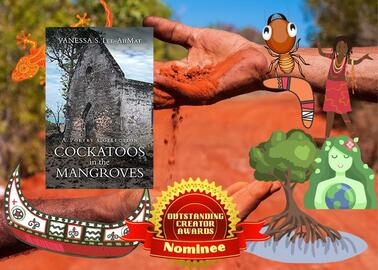
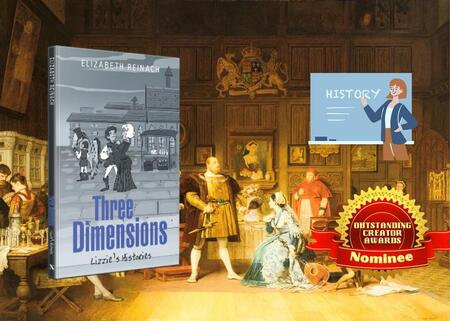

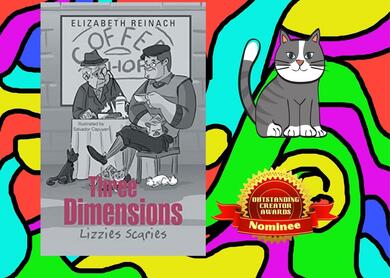
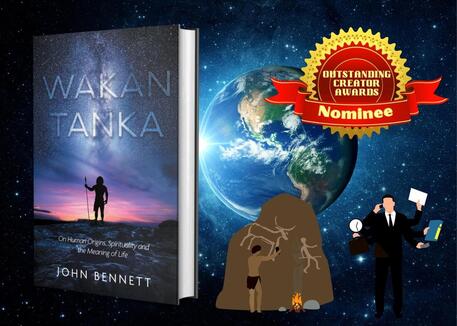
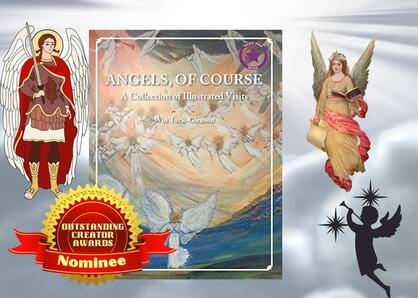
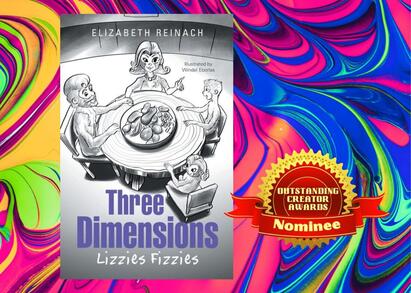
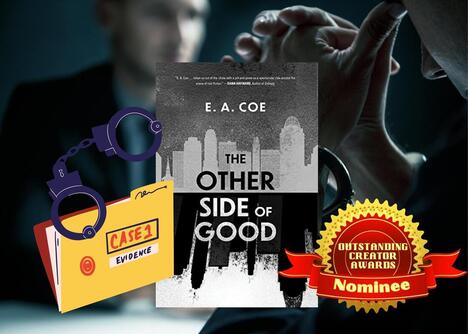
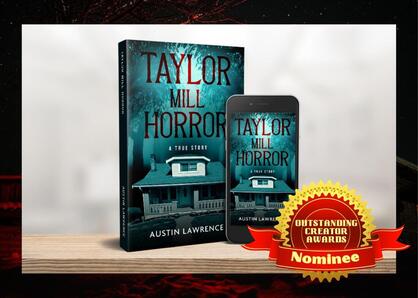
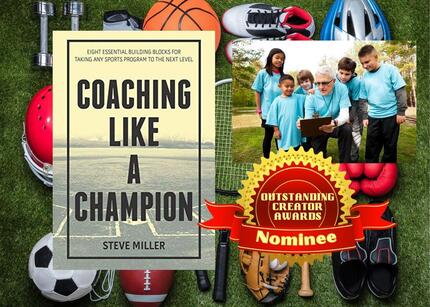
 RSS Feed
RSS Feed